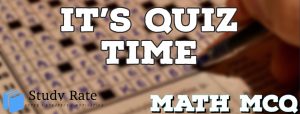Are you a Class 10 student studying mathematics? Do you find real numbers a challenging topic to grasp? Look no further! In this article, we have compiled handwritten notes by toppers exclusively for you. These comprehensive notes cover the fundamental concepts of real numbers, providing you with a valuable resource to enhance your understanding. So, let’s dive in and explore the world of real numbers together!
Join our Telegram Channel, there you will get various e-books for CBSE 2024 Boards exams for Class 9th, 10th, 11th, and 12th.
Class 10 Maths Real Numbers – Get here the Handwritten Notes for Class 10 Real Numbers. Candidates who are ambitious to qualify the Class 10 with a good score can check this article for Notes. Below we provided the link to access the Notes of Class 10 Maths for the topic Real Numbers. You can practice the questions and check your answers from the solutions given after the question. By practicing these resources candidates definitely get the idea of which his/her weak areas and how to prepare well for the examination.
- Class: 10th
- Subject: Math
- Topic: Real Numbers
- Resource: Handwritten Notes
Maths Handwritten Notes is based on the new(reduced) syllabus by CBSE.
Table of Contents
CBSE Class 10 Maths Real Numbers Handwritten Notes
| Notes Type | Download Link |
|---|---|
| Notes | Click Here |
| Examples | Click Here |
| Solutions 1 | Click Here |
| Solutions 2 | Click Here |
Particularly when it comes to the subject of Mathematics, students desire to have an answer key to help them in evaluating their learning and development. Refer to these solutions when practicing and solving the Mathematics exercises from NCERT Textbooks.
Download Class 10 Maths Notes Chapter-wise
- Chapter 1 Real Numbers
- Chapter 2 Polynomials
- Chapter 3 Pair of Linear Equations in Two Variables
- Chapter 4 Quadratic Equations
- Chapter 5 Arithmetic Progressions
- Chapter 6 Triangles
- Chapter 7 Coordinate Geometry
- Chapter 8 Introduction to Trigonometry
- Chapter 9 Some Applications of Trigonometry
- Chapter 10 Circles
- Chapter 11 Constructions
- Chapter 12 Areas Related to Circles
- Chapter 13 Surface Areas and Volumes
- Chapter 14 Statistics
- Chapter 15 Probability
Created with AIPRM Prompt “Human Written |100% Unique |SEO Optimized Article”
Class 10 Maths Real Numbers Handwritten Notes by Toppers – Download PDF
Are you a Class 10 student studying mathematics? Do you find real numbers a challenging topic to grasp? Look no further! In this article, we have compiled handwritten notes by toppers exclusively for you. These comprehensive notes cover the fundamental concepts of real numbers, providing you with a valuable resource to enhance your understanding. So, let’s dive in and explore the world of real numbers together!
Table of Contents
- Introduction to Real Numbers
- Natural Numbers
- Whole Numbers
- Integers
- Rational Numbers
- Irrational Numbers
- Properties of Real Numbers
- Operations on Real Numbers
- Simplifying Expressions with Real Numbers
- Prime Numbers
- Composite Numbers
- Divisibility Rules
- Euclid’s Division Lemma
- Fundamental Theorem of Arithmetic
- Applications of Real Numbers
1. Introduction to Real Numbers
Real numbers form the basis of mathematics and have a wide range of applications in various fields. They encompass both rational and irrational numbers, making them an essential topic to study. Real numbers can be represented on a number line, allowing us to visualize their relationships and properties.
2. Natural Numbers
Natural numbers are the counting numbers starting from 1 and extending infinitely. They are denoted by the symbol “N.” These numbers are used for counting objects or elements in a set. Natural numbers are a subset of real numbers.
3. Whole Numbers
Whole numbers are similar to natural numbers but include zero as well. They are denoted by the symbol “W.” Whole numbers are used to represent quantities that do not involve fractional or decimal parts. Whole numbers are also a subset of real numbers.
4. Integers
Integers are a broader category that includes both positive and negative whole numbers, along with zero. They are denoted by the symbol “Z.” Integers are useful in representing situations involving gains and losses, temperatures, and positions on a coordinate plane. Integers are a subset of real numbers.
5. Rational Numbers
Rational numbers are numbers that can be expressed as fractions, where the numerator and denominator are integers. They are denoted by the symbol “Q.” Rational numbers can be positive, negative, or zero. Examples of rational numbers include 1/2, -3/4, and 5/1. Rational numbers form a dense set on the number line.
6. Irrational Numbers
Irrational numbers are numbers that cannot be expressed as fractions and have non-terminating and non-repeating decimal representations. They are denoted by the symbol “I.” Irrational numbers include numbers such as √2, π, and e. Irrational numbers are also found densely on the number line.
7. Properties of Real Numbers
Real numbers possess several fundamental properties that govern their behavior in mathematical operations. These properties include the commutative property, associative property, distributive property, additive identity, multiplicative identity, additive inverse, and multiplicative inverse. Understanding these properties is crucial for working with real numbers effectively.
8. Operations on Real Numbers
Real numbers support various operations, such as addition, subtraction, multiplication, and division. These operations follow specific rules and properties that ensure consistency and accuracy in calculations. By mastering these operations, you can perform complex mathematical tasks with ease.
9. Simplifying Expressions with Real Numbers
Simplifying expressions involving real numbers is an important skill in mathematics. By applying the properties and operations of real numbers, you can simplify complex expressions and equations, making them easier to analyze and solve.
10. Prime Numbers
Prime numbers are positive integers greater than 1 that have no divisors other than 1 and themselves. They play a fundamental role in number theory and have applications in cryptography and computer science. Understanding prime numbers is essential for various mathematical concepts.
11. Composite Numbers
Composite numbers are positive integers greater than 1 that have more than two divisors. In other words, they are not prime numbers. Composite numbers can be factored into smaller positive integers, providing insights into their properties and relationships.
12. Divisibility Rules
Divisibility rules are guidelines that help determine whether one number is divisible by another without performing division. These rules are based on the properties of numbers and can simplify calculations, particularly when dealing with large numbers.
13. Euclid’s Division Lemma
Euclid’s Division Lemma is a fundamental concept in number theory. It states that for any two positive integers a and b, there exist unique integers q and r such that a = bq + r, where r is the remainder and 0 ≤ r < b. Euclid’s Division Lemma forms the basis for various other concepts in number theory, including the Euclidean algorithm.
14. Fundamental Theorem of Arithmetic
The Fundamental Theorem of Arithmetic states that every positive integer greater than 1 can be expressed uniquely as a product of prime numbers, up to the order of the factors. This theorem highlights the significance of prime numbers in understanding the structure of integers.
15. Applications of Real Numbers
Real numbers have widespread applications in various fields, including science, engineering, finance, and technology. They provide a precise and accurate way to represent quantities and measurements. From calculating distances to modeling complex systems, real numbers play a crucial role in problem-solving and analysis.
Conclusion
In conclusion, understanding real numbers is essential for any Class 10 student studying mathematics. The handwritten notes provided by toppers offer a comprehensive resource to enhance your knowledge and grasp the concepts effectively. By exploring the topics covered in these notes, you can strengthen your foundation in mathematics and excel in your academic pursuits.



